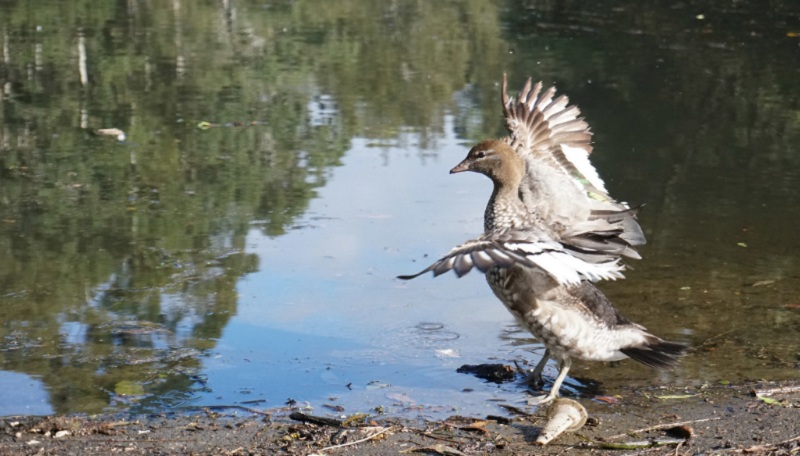By Syed Shariq Husain
Two decades ago, research found that changes in bird songs could be used as warnings for detecting man-made environmental disturbances and risks such as the excessive presence of carbon monoxide.
Analysing the recordings of songs of 200 Dupont’s larks, a species native to Spain and Morocco, ecologists found that when birds lost their homes, it affected their abilities to communicate.
Today, a growing body of evidence suggests the prevalence of micro- and nano-plastics in the guts of birds and marine life, including fishes. There is fresh alarm that similar particles have been found in the lungs of birds around China’s Chengdu Tianfu airport.
Researchers found microplastics and nanoplastics exposure in the lungs of 51 species of birds, with one analysis revealing an average abundance of 221.20 particles per species and 416.22 microplastics per gram of lung tissue.
What surprised researchers was that all birds, irrespective of their size, habitat preference and feeding habits, were contaminated.
In 2024, another study, undertaken in a rare birds nature reserve in China’s Jiangsu Province, also found microplastics in the faeces of 110 birds, suggesting a clear link between the prevalence of such substances in bird habitat and their ingestion.
Research shows efforts at detecting microplastic and nanoplastic substances, which are highly toxic for both terrestrial and aquatic ecosystems, have been undertaken across North America, China, Australia and South Europe.
Over the past couple of years, shorelines across ten important wintering grounds on India’s west coast reported the prevalence of microplastics.
The results of a study conducted in January last year showed that water was the primary source through which microplastics “disseminate into various ecosystem components” and that “microplastic debris in various forms” were reported in all samples of shorebirds. Microfibres were the most common form of microplastic debris found in birds found along the shore.
In a 2024 study in Coimbatore in Tamil Nadu, the presence of microplastics was reported in the “pellets” of common kingfishers along the wetlands of Noyyal river. The examination of the pellets revealed the presence of so-called “plastic elements”, including polyethylene and polypropylene fibres.
That year, it was estimated that India discharged 391,879 tonnes of microplastics into its waterbodies, making it the second leading polluter after China.
The previous year, India’s Central Pollution Control Board reported the presence of microplastics in waterbodies in some coastal locations.
Riverine ecosystem
India’s riverine ecosystem is already threatened by the excessive presence of microplastics whose “contamination levels” were found to be high in two bivalve species, or aquatic molluscs, along the Chandragiri river in Kerala and Karnataka.
The 2024 study in Coimbatore found a total of 667 microplastic particles in 288 molluscs.
Microplastics are “inadvertently ingested” by aquatic invertebrates such as zooplankton, clams and mussels. In the oceans, they are of similar size and appearance to tiny marine organisms, and are ingested as prey by fish and shellfish.
These fish and shellfish species are the primary sources of food for seabirds which makes the latter susceptible to plastic exposure.
Globally, about 40 percent of seabirds were found to have ingested plastic of varying sizes. These can block or damage their digestive systems. Studies in Europe, such as one in 2019 found that six of the 16 species examined had microplastic deposits in their digestive systems.
A more recent study found an alarming concentration of ingested microplastics in seabird chicks in Australia.
Plastic pollution causes different types of threats to birds, including entanglement in fishing gear and ingestion of plastic waste. In some cases, migratory seabirds are particularly vulnerable to plastic ingestion as they are unable to distinguish between floating plastic pieces and prey while flying. In another study in Turkey in 2025, researchers detected microplastics in 50 percent of bird species, with the short-toed snake eagle having the highest concentration.
Microplastic deposits
In some Indian coastal belts, for instance, the types of microplastics ingested by shorebirds varied, depending on their feeding strategies.
However, biofilms – communities of micro-organisms attached to a surface – served as significant deposits of microplastics, which facilitated their transfer to shorebirds.
The common sources of such microplastics include discarded fishing gear and domestic sewage from towns close to the coast.
Several plastic variants including polyethylene, polypropylene, polystyrene, poly vinyl chloride and nitrile were polymers identified in the droppings of ten regular wintering migrant shorebird species in a research whose findings were published in October 2024.
The contamination of birds and the consequent bioaccumulation of microplastics highlights the pervasive nature of pollution of water bodies, including oceans. There is also a threat of airborne plastic pollution.
This makes the problem truly global and intertwined, putting various fish, turtles and several bird species vulnerable to plastic litter and plastic marine debris.
It has been eight years since efforts were made on a global level to address the issue of plastic pollution among birds. The clean seas campaign of 2017 urged individuals, businesses and governments to take concrete steps to cut down on plastic use.
The same year, the Parties to the Convention on Migratory Species agreed to address the issue of lost fishing gear. At the same time, efforts have been on to phase out single-use plastic items and to redesign plastic products so they are easier to recycle.
Indian authorities had proposed a ten-year perspective plan (2020-2030) for conserving avian diversity, their ecosystems, habitats and landscapes across the country.
The plan recognises the threat posed to India’s 1,317 bird species as a consequence of extensive urbanisation. While it offers solutions, the real problem is their meaningful implementation.
Local projects aimed at managing plastic waste can produce results in a short period of time. An important step that can go a long way in keeping birds free from the dangers of plastic ingestion is to make coastal belts totally free from plastic use. If need be, legislation can be introduced.
There should also be concentrated efforts to strictly control dumping waste in areas such as wetlands and bird habitats.
However, efforts must be made to better understand sources of plastic pollution, and how birds are getting exposed to these contaminants. This will provide deeper insights into the impact of microplastics on birds.
Syed Shariq Hussein is Assistant Professor, Jindal School of Government and Public Policy, O.P. Jindal Global University, Sonipat, Haryana.
Originally published under Creative Commons by 360info™.















